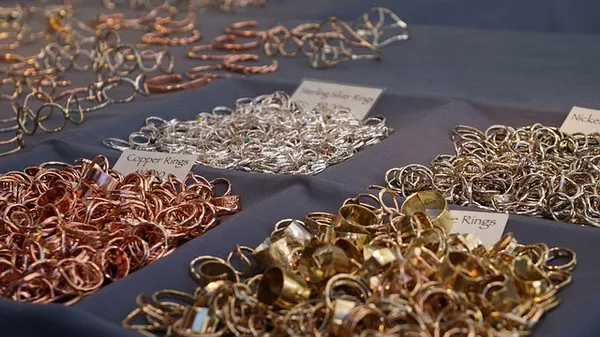Silver, often referred to as the “poor man’s gold,” has long been a significant player in the precious metals market. Investors and enthusiasts closely monitor silver prices, which are influenced by a myriad of factors ranging from economic indicators to global geopolitical events. Recently, there has been a noticeable downward trend in silver prices, prompting market participants to seek a deeper understanding of the underlying factors contributing to this decline. In this article, we will delve into the multifaceted reasons behind the current slump in silver prices.
Global Economic Conditions:
One of the primary drivers influencing silver prices is the state of the global economy. Silver, being an industrial metal, is highly sensitive to economic fluctuations. The ongoing economic challenges, exacerbated by factors such as the global supply chain disruptions, inflation concerns, and the impacts of the COVID-19 pandemic, have played a pivotal role in the decline of silver prices.
As economies struggle to recover from the pandemic-induced downturn, the demand for industrial metals, including silver, has been subdued. Manufacturing and industrial activities, key consumers of silver, have faced disruptions, leading to reduced demand and subsequently lower prices.
Strength of the U.S. Dollar:
The value of the U.S. dollar and silver prices often exhibit an inverse relationship. When the U.S. dollar strengthens, commodities priced in dollars, such as silver, become more expensive for buyers in other currencies, leading to decreased demand. Conversely, a weaker dollar tends to make silver more attractive to international buyers.
In recent times, the U.S. dollar has shown resilience, buoyed by a relatively robust economic recovery compared to other regions. This strength has applied downward pressure on silver prices, making it less appealing to investors seeking alternative assets.
Interest Rates and Monetary Policy:
The prevailing interest rates set by central banks significantly impact the attractiveness of precious metals as investment assets. Generally, when interest rates are low, the opportunity cost of holding non-interest-bearing assets like silver diminishes, making them more appealing to investors. Conversely, higher interest rates can divert investment towards interest-bearing instruments, leading to a decline in demand for precious metals.
In the current economic landscape, central banks in some major economies have started signaling a shift towards tighter monetary policies by raising interest rates. This move has contributed to a shift in investor preferences, reducing the appeal of silver as an investment option.
Speculative Trading and Market Sentiment:
The precious metals market is not immune to speculative trading and the influence of market sentiment. Changes in investor sentiment can lead to rapid and significant price movements. The recent decline in silver prices can, in part, be attributed to a shift in market sentiment, with investors reacting to economic uncertainties, geopolitical tensions, and other macroeconomic factors.
Additionally, the rise of algorithmic and high-frequency trading has added a layer of complexity to the precious metals market. These automated trading strategies can exacerbate price movements, leading to increased volatility and sudden downturns in silver prices.
Supply and Demand Dynamics:
The basic economic principle of supply and demand is fundamental to understanding price movements in any market, including precious metals. The mining and production of silver, influenced by factors such as technological advancements and regulatory changes, contribute to the overall supply. Concurrently, industrial applications, jewelry manufacturing, and investment demand form the pillars of silver’s demand.
A surplus in silver supply or a decline in demand can lead to an imbalance, putting downward pressure on prices. Factors such as reduced industrial activity, substitution with alternative materials, and changes in consumer preferences can impact the demand side, potentially contributing to the recent decline in silver prices.
See Also How to Tell if It’s Real Silver? A Comprehensive Guide
Conclusion:
In conclusion, the decline in silver prices is a result of a confluence of factors, both domestic and international. The interplay of global economic conditions, the strength of the U.S. dollar, monetary policy decisions, speculative trading, and supply and demand dynamics collectively contribute to the observed downward trend in silver prices.
Investors and market participants should remain vigilant and adapt their strategies based on a comprehensive understanding of these factors. As the global economic landscape continues to evolve, silver prices will likely respond to shifting dynamics, making it crucial for stakeholders to stay informed and navigate the precious metals market with prudence.


